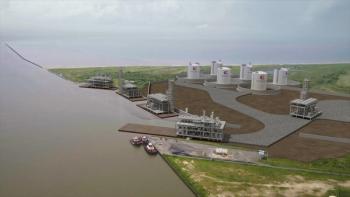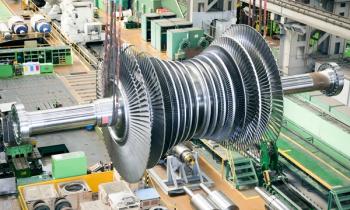
Carbon Capture and Storage Opportunities for Turbomachinery OEMs Growing Fast
Key Takeaways
- CCS is expected to quadruple by 2030, with significant investment in North America and Europe driving growth.
- Demand will shift to hard-to-decarbonize industries, requiring advanced turbomachinery and larger CO₂ compression systems.
Growing demand for carbon capture and storage technology is transforming the industry, driving demand for advanced turbomachinery and reshaping the market landscape for decarbonization efforts.
The World Economic Forum’s
OEMs in the spotlight
Early CCS installations still gravitate toward natural-gas processing and “blue” hydrogen or ammonia plants, where high CO₂ concentrations and existing mid-stream infrastructure keep costs low. However, after 2030, hard-to-decarbonize industries such as cement, steel, and chemicals are set to dominate demand, accounting for approximately 41% of annual captured volumes by 2050. That shift will require larger, higher-pressure CO₂ compression trains, robust process-gas turbines, and plenty of power and steam—placing turbomachinery manufacturers squarely at the center of the value chain.
What it means for turbomachinery stakeholders
For equipment makers, near-term priorities cluster around four strategic arenas. First, CO₂ compression and re-injection hardware is moving from concept to purchase order. Projects such as the Net-Zero Teesside Power project and Northern Endurance Partnership’s six-well program demand modular, multi-stage centrifugal compressor packages sized for 1 to 5 million ton-per-year duty. OEMs that can fast-track these skids stand to dominate the early build-out.
Second, “capture-ready” gas turbine orders are taking shape. UK combined-cycle retrofits like Connah’s Quay, together with blue-hydrogen and
Third, demand for hydrogen- and ammonia-service compressors is set to eclipse other process-gas applications after 2030. DNV forecasts make low-carbon H₂ and NH₃ the single largest CCS-enabled market in the Middle East and North America, so integrally geared compressors should be adapted now. Aligning early with EPC contractors will embed those machines at the front end of multi-billion-dollar projects.
Finally, service models must evolve alongside the hardware. As carbon prices rise, operators want cradle-to-grave risk sharing, pushing OEMs and service firms to bundle continuous monitoring, corrosion inspection, and seal-health analytics into agreements that cover new CO₂/H₂ duty cycles. Those who tie performance guarantees to decarbonization targets will secure the longest and most lucrative contracts in this rapidly scaling sector.
Outlook
With CCS capacity poised to quadruple in just 5 years and heavy-industry applications following close behind, the addressable market for turbomachinery looks set to expand for at least a decade. Flexible, capture-ready power and process equipment is no longer a niche requirement—it is the new baseline for staying competitive in a decarbonizing global economy.
Newsletter
Power your knowledge with the latest in turbine technology, engineering advances, and energy solutions—subscribe to Turbomachinery International today.




